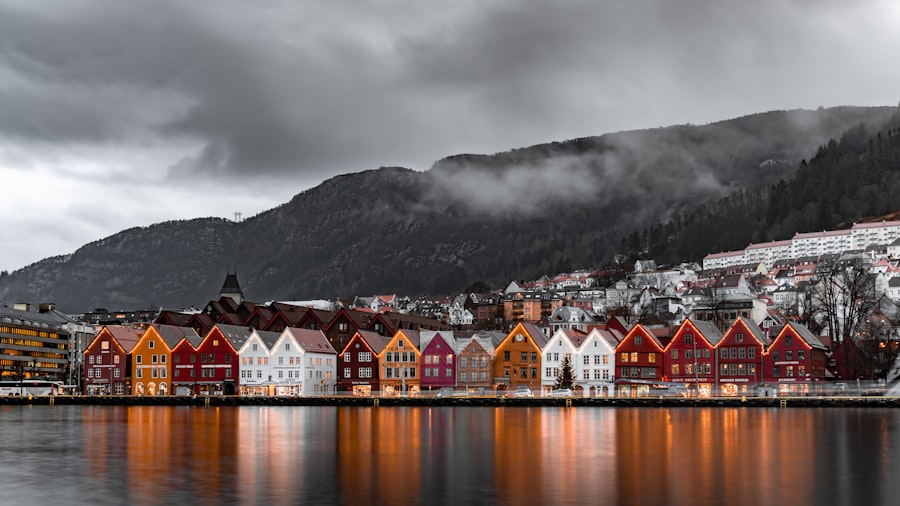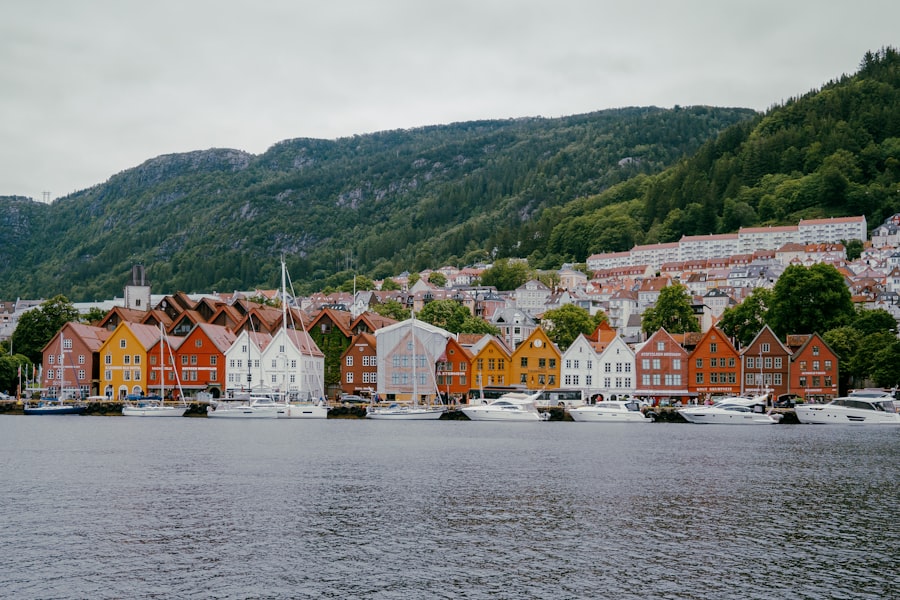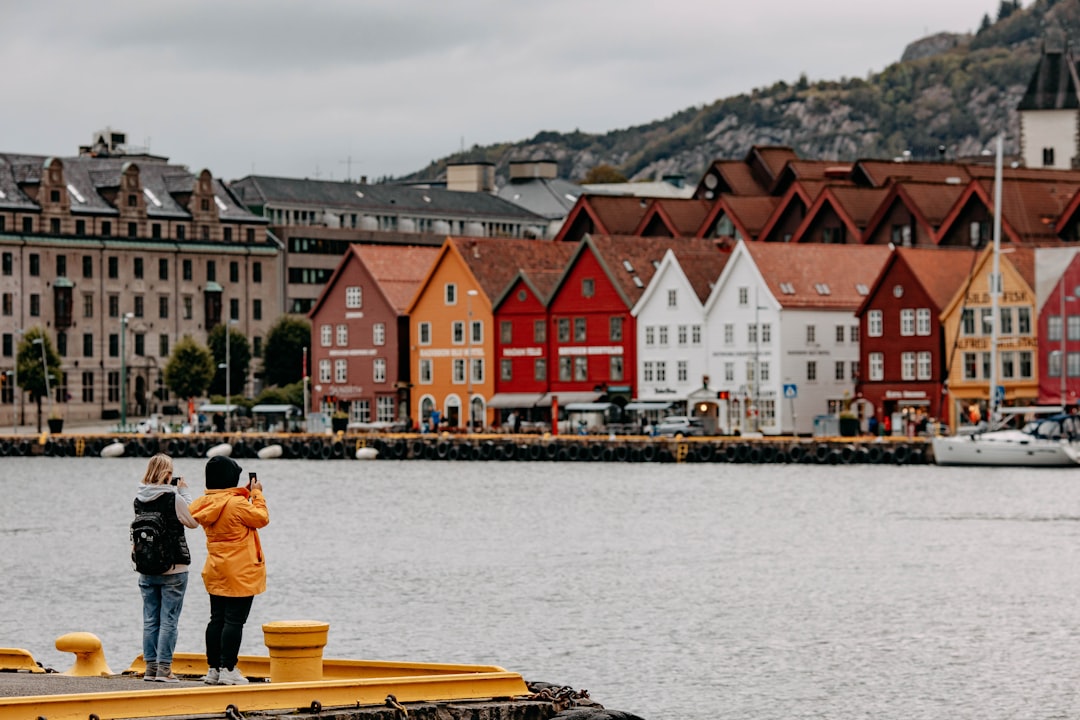All Saint’s Day, or “Allehelgensdag” as it is known in Norwegian, has a rich history that intertwines with the Christianisation of Norway. The day is celebrated on the first Sunday in November, a tradition that dates back to the early medieval period. Initially, it was established by the Catholic Church to honour all saints, known and unknown, who had attained heaven.
The origins of this observance can be traced back to the 9th century when Pope Gregory IV extended the celebration of All Saints’ Day to the entire Church. As Norway gradually embraced Christianity, this day became an integral part of the liturgical calendar. The transition from pagan traditions to Christian practices was not instantaneous.
In Norway, the celebration of All Saint’s Day evolved alongside local customs and beliefs. The day was initially marked by solemnity and reflection, as communities gathered to remember their deceased loved ones. Over time, the observance took on a more communal aspect, with families coming together to honour their ancestors and share stories of those who had passed away.
This blending of Christian and local traditions has shaped the unique way All Saint’s Day is celebrated in Norway today. Your journey to a smooth relocation starts here. Talk one-on-one with a Norway Relocation specialist and turn your plan into a reality.
Summary
- All Saint’s Day in Norway has its roots in the Christian tradition and has been celebrated since the Middle Ages.
- All Saint’s Day holds great significance in Norwegian culture as a day to honour and remember loved ones who have passed away.
- Traditional customs and practices on All Saint’s Day in Norway include visiting graves, lighting candles, and attending church services.
- All Saint’s Day is celebrated in Norway with a focus on remembrance, reflection, and spending time with family.
- Church services play a central role on All Saint’s Day in Norway, providing a space for prayer, reflection, and communal remembrance.
The Significance of All Saint’s Day in Norwegian Culture
All Saint’s Day holds profound significance in Norwegian culture, serving as a poignant reminder of mortality and the enduring bonds between the living and the dead. It is a day dedicated to reflection, remembrance, and gratitude for the lives of those who have shaped our own. In a society that values family and community ties, this day provides an opportunity for individuals to come together and honour their shared heritage.
The observance of All Saint’s Day fosters a sense of continuity, linking generations through collective memory. Moreover, All Saint’s Day is a time for introspection and spiritual contemplation. Norwegians often take this opportunity to reflect on their own lives and the legacies they wish to leave behind.
The day encourages individuals to consider their relationships with both the living and the deceased, prompting discussions about life, death, and what it means to be part of a larger community. This cultural significance is deeply rooted in Norway’s history and continues to resonate with people today.
Traditional Customs and Practices on All Saint’s Day

Traditional customs associated with All Saint’s Day in Norway are steeped in both solemnity and celebration. One of the most prominent practices is the lighting of candles at gravesites. Families often visit cemeteries to place candles on the graves of their loved ones, creating a sea of flickering lights that illuminate the darkness of autumn evenings.
This act serves as a symbol of remembrance and love, allowing families to feel a connection with those who have passed away. In addition to visiting graves, many Norwegians engage in storytelling during All Saint’s Day. Families gather to share memories of their ancestors, recounting tales that highlight their virtues and contributions to family history.
This practice not only preserves cultural heritage but also strengthens familial bonds as stories are passed down through generations. The blending of remembrance with storytelling creates a rich tapestry of shared experiences that define Norwegian identity.
How All Saint’s Day is Celebrated in Norway
The celebration of All Saint’s Day in Norway varies from region to region, reflecting local customs and traditions. In urban areas, churches often hold special services that draw large congregations, while rural communities may observe the day with more intimate gatherings. Regardless of location, the essence of the celebration remains consistent: a focus on remembrance and reflection.
In many towns and cities, public events are organised to commemorate All Saint’s Day. These may include candlelight vigils, community gatherings, or cultural performances that highlight the significance of the day. Schools often incorporate lessons about All Saint’s Day into their curricula, teaching children about its history and importance within Norwegian culture.
This educational aspect ensures that future generations continue to honour their ancestors and understand the value of remembrance.
The Role of Church Services on All Saint’s Day
Church services play a central role in the observance of All Saint’s Day in Norway. Many congregations hold special liturgies that focus on themes of remembrance, hope, and resurrection. These services often include prayers for the deceased, hymns that celebrate the lives of saints, and reflections on the nature of life and death.
The church becomes a gathering place for families seeking solace and connection during this poignant time. In addition to traditional services, some churches incorporate modern elements into their observances. This may include multimedia presentations that highlight personal stories or community initiatives aimed at supporting those who are grieving.
By adapting to contemporary needs while maintaining core traditions, churches in Norway ensure that All Saint’s Day remains relevant and meaningful for all generations.
All Saint’s Day as a Day of Remembrance for Loved Ones

All Saint’s Day serves as a powerful reminder for Norwegians to honour their loved ones who have passed away. It is a day dedicated to remembering not only family members but also friends and community figures who have made an impact on their lives. The act of remembrance fosters a sense of connection that transcends time and space, allowing individuals to feel close to those they have lost.
This day also encourages conversations about grief and loss within families and communities. By openly discussing their feelings and memories, individuals can find comfort in shared experiences and support one another through the grieving process. All Saint’s Day thus becomes not only a time for reflection but also an opportunity for healing as families come together to celebrate life amidst sorrow.
The Importance of Visiting Graves on All Saint’s Day
Visiting graves on All Saint’s Day is one of the most cherished customs in Norway. Families often make it a priority to visit cemeteries, bringing flowers and candles to adorn the resting places of their loved ones. This act serves as a tangible expression of love and remembrance, allowing individuals to connect with their ancestors in a meaningful way.
The atmosphere at cemeteries during All Saint’s Day is often serene yet filled with emotion. As families gather around gravesites, they share stories, reminisce about cherished moments, and reflect on the legacies left behind by those they have lost. This communal experience fosters a sense of solidarity among families as they navigate their grief together while celebrating the lives that have shaped their own.
All Saint’s Day Traditions and Symbols in Norway
Norwegian traditions associated with All Saint’s Day are rich with symbolism that reflects both cultural heritage and spiritual beliefs. Candles are perhaps the most significant symbol of this day; they represent light in darkness and hope amidst sorrow. The act of lighting candles at gravesites serves as a reminder that love endures beyond death.
Another important symbol is the use of flowers during All Saint’s Day observances. Families often bring seasonal blooms such as chrysanthemums or lilies to decorate graves or altars in churches. These flowers not only beautify the surroundings but also signify renewal and the cycle of life—a poignant reminder that death is not an end but rather a transition into another phase of existence.
All Saint’s Day and the Connection to Halloween
While All Saint’s Day is distinct from Halloween, there are intriguing connections between these two observances that reflect broader cultural themes surrounding death and remembrance. Halloween, celebrated on 31st October, has its roots in ancient Celtic traditions that honour the dead; similarly, All Saint’s Day serves as a time for reflection on those who have passed away. In Norway, Halloween has gained popularity over recent years, particularly among younger generations who embrace its festive aspects such as costumes and trick-or-treating.
However, many still recognise the importance of All Saint’s Day as a more solemn occasion dedicated to honouring deceased loved ones. This duality highlights how different cultures approach themes of mortality—balancing celebration with remembrance.
All Saint’s Day in Modern Norwegian Society
In modern Norwegian society, All Saint’s Day continues to hold relevance despite changing cultural dynamics. As urbanisation increases and traditional practices evolve, many Norwegians still find value in observing this day as an opportunity for reflection and connection with their heritage. The significance placed on family ties remains strong; even amidst busy lives, individuals carve out time to remember those who have shaped their identities.
Moreover, contemporary interpretations of All Saint’s Day often incorporate elements from various cultural backgrounds due to Norway’s increasingly diverse population. This blending enriches the observance by introducing new perspectives on remembrance while maintaining core values rooted in tradition. As society evolves, so too does the way Norwegians celebrate this important day.
How All Saint’s Day Differs from All Souls’ Day in Norway
While both All Saint’s Day and All Souls’ Day are dedicated to remembering the deceased, they serve distinct purposes within Norwegian culture. All Saint’s Day focuses on honouring saints—both known and unknown—while All Souls’ Day (observed on 2nd November) specifically commemorates all souls who have departed from this world. In practice, this distinction manifests itself in how each day is observed.
On All Saint’s Day, families may visit gravesites or attend church services that celebrate saints’ lives; conversely, All Souls’ Day often involves prayers for those who may still be in purgatory or seeking peace after death. Understanding these differences allows Norwegians to navigate their spiritual beliefs while honouring their loved ones appropriately. In conclusion, All Saint’s Day is an integral part of Norwegian culture that weaves together history, tradition, and personal reflection.
As families gather to remember their loved ones through various customs—such as visiting graves or attending church services—they reinforce connections across generations while embracing both sorrow and joy inherent in life’s journey. For those considering relocation or integration into Norwegian society, organisations like the Norway Relocation Group can provide invaluable assistance in navigating cultural nuances such as these celebrations. Furthermore, for newcomers eager to immerse themselves fully into Norwegian culture—including understanding significant observances like All Saint’s Day—the NLS Norwegian Language School in Oslo offers comprehensive courses designed for all levels.
Learning the language not only enhances communication but also deepens one’s appreciation for local customs and traditions—making it easier to participate meaningfully in celebrations like All Saint’s Day alongside fellow Norwegians.
Register for a Norwegian class at the NLS Norwegian Language School now!

